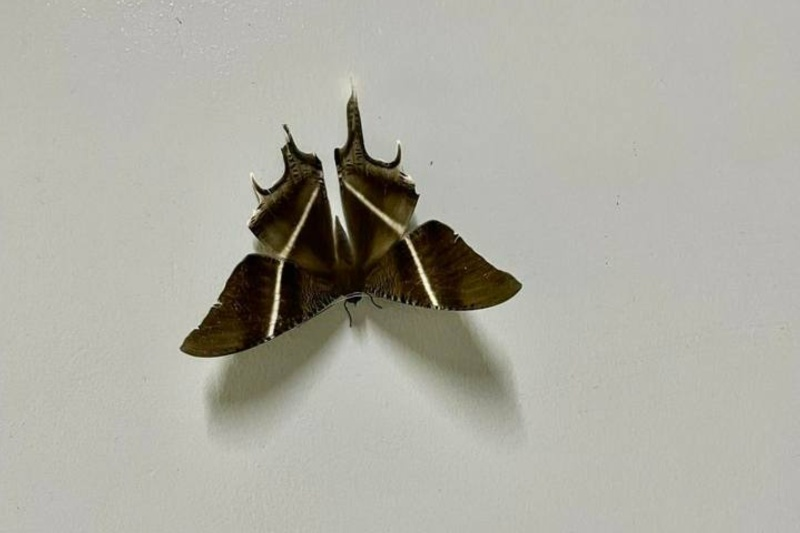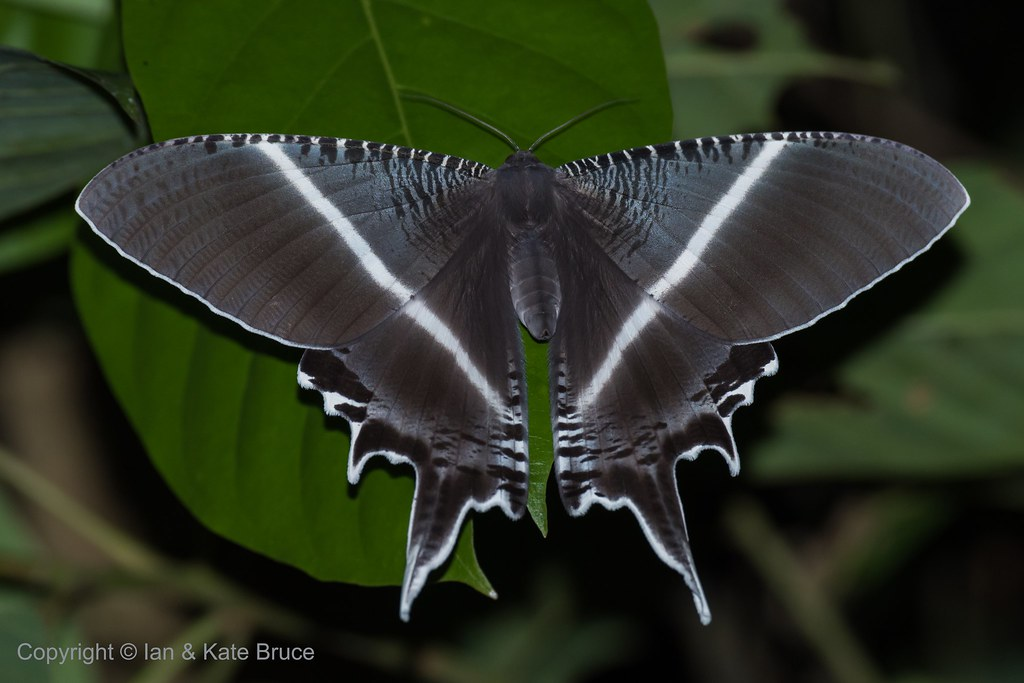Tropical Swallowtail Moths have recently been spotted in various parts of Metro Manila, creating a stir among residents who are unfamiliar with this large, eye-catching insect. However, experts have stepped in to reassure the public that these moths pose no harm to humans and are simply a beautiful part of nature.
The sudden appearance of these striking moths, particularly in urban gardens, street lamps, and even residential buildings, has raised questions. But as entomologists explain, Tropical Swallowtail Moths are native to Southeast Asia and occasionally emerge in large numbers due to natural cycles or changes in weather.
What are Tropical Swallowtail Moths?
The Tropical Swallowtail Moth (Lyssa zampa) is one of the largest moth species found in Asia. With a wingspan that can stretch up to 16 centimeters, these moths are known for their wide, triangular wings, often colored in shades of brown and grey with elegant patterns that help them blend into tree bark during the day.
Unlike butterflies, they are mostly nocturnal and are often drawn to light sources at night. This is why many Metro Manila residents have seen them flying around streetlights or resting on walls in the evenings.
Why Are They in Metro Manila?

Tropical Swallowtail Moths are generally found in tropical and subtropical forests. According to Dr. Ernesto De Guzman, a biologist from the University of the Philippines, the recent sightings in Metro Manila are not unusual.
“This is not a cause for alarm,” he said. “These moths follow migration patterns influenced by rainfall, temperature, and humidity. When conditions are right, they can appear in large numbers even in urban areas.”
Dr. De Guzman added that climate changes and increasing green spaces in the metro could be contributing to their presence. The moths are attracted to gardens and flowering plants, especially those that bloom at night.
Are Tropical Swallowtail Moths Dangerous?
No. Despite their large size and unusual appearance, Tropical Swallowtail Moths pose no danger to humans. They do not bite, sting, or carry diseases. In fact, they are more vulnerable to human interference than we are to them.
“People often panic when they see big insects, but these moths are completely harmless,” said Dr. De Guzman. “They play an important role in pollination and are part of our rich biodiversity.”
Experts urge the public not to kill or harm them. Instead, allow them to fly freely or gently guide them outside if they enter homes.
Life Cycle and Behavior
The life cycle of the Tropical Swallowtail Moth includes egg, caterpillar, pupa, and adult stages. The caterpillars are large and feed on the leaves of various tropical trees, including the rubber tree and breadfruit tree. While the caterpillar stage might seem intimidating due to its size, it also poses no threat.
As adults, the moths typically live for only a few days to a week, focusing mainly on reproduction. They do not feed during this time, relying on energy stored from their larval stage.
Role in the Ecosystem
These moths play a vital role in forest ecosystems. Their caterpillars help in leaf pruning, which encourages new plant growth. As adults, they are part of the nighttime pollination cycle, visiting flowers that bloom after dark.
In areas like Metro Manila, where green zones are growing, their appearance is a sign that some urban biodiversity is being preserved.
Public Reaction and Social Media Buzz
Social media platforms have been flooded with pictures and videos of these moths. Some users expressed fear or curiosity, while others admired their beauty. The moth’s sudden fame has even led to local myths and urban legends about their appearance, with some calling them “harbingers of change.”
However, science provides a simple explanation: seasonal behavior, not superstition.
Wildlife officials have also reminded the public that the Tropical Swallowtail Moth is a protected species in many countries, and unnecessary killing or capturing can harm the ecosystem.
What to Do If You See One
If you spot a Tropical Swallowtail Moth, you can:
- Observe it from a distance and appreciate its beauty.
- Avoid touching it, as its wings are delicate.
- Gently guide it outdoors if it enters your home.
- Refrain from using insecticides or sprays.
If you are concerned about moths inside your home, use natural methods like turning off extra lights at night and keeping windows closed.
Should We Expect More Sightings?

According to experts, yes. With the monsoon season and rising temperatures, these moths may continue to appear in small waves. But again, there is no need to worry. Their appearance is a natural event and not a sign of infestation or health risk.
Dr. De Guzman advises the public to treat these moments as learning opportunities. “It’s rare to see such magnificent creatures up close. We should celebrate biodiversity instead of fearing it.”
Educational Opportunity
Schools and environmental organizations can use this opportunity to teach students and communities about local insect species, conservation, and the importance of urban biodiversity. Encouraging a positive view of insects like the Tropical Swallowtail Moth helps reduce fear and promotes coexistence.
Some local groups are now planning to organize community walks and talks to raise awareness about moth species, their roles, and how to protect them.
Conclusion
The recent sightings of Tropical Swallowtail Moths in Metro Manila may seem surprising, but there is no cause for alarm. These stunning, large moths are a harmless and beautiful part of the natural world. Experts confirm they pose no threat to humans and are a healthy sign of local biodiversity. Instead of fearing them, residents are encouraged to observe, learn, and appreciate their presence.
As cities grow, nature finds small ways to remind us it’s still here—and the Tropical Swallowtail Moth is one gentle reminder we should welcome.
Also Read – Saudi Arabia Launches 2025 Tourism Drive With 10 Big Perks



